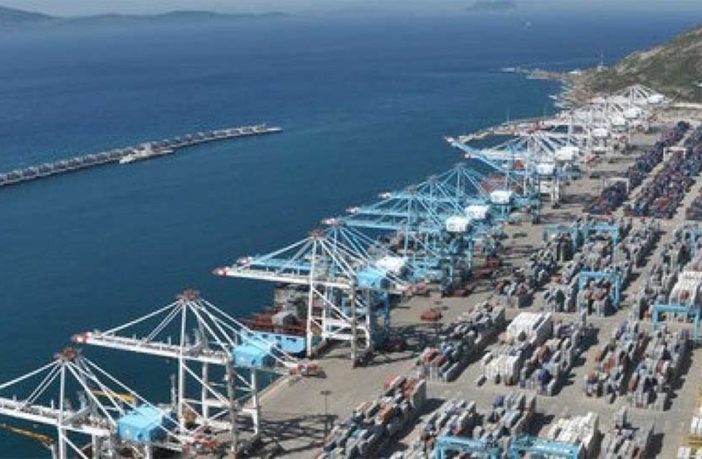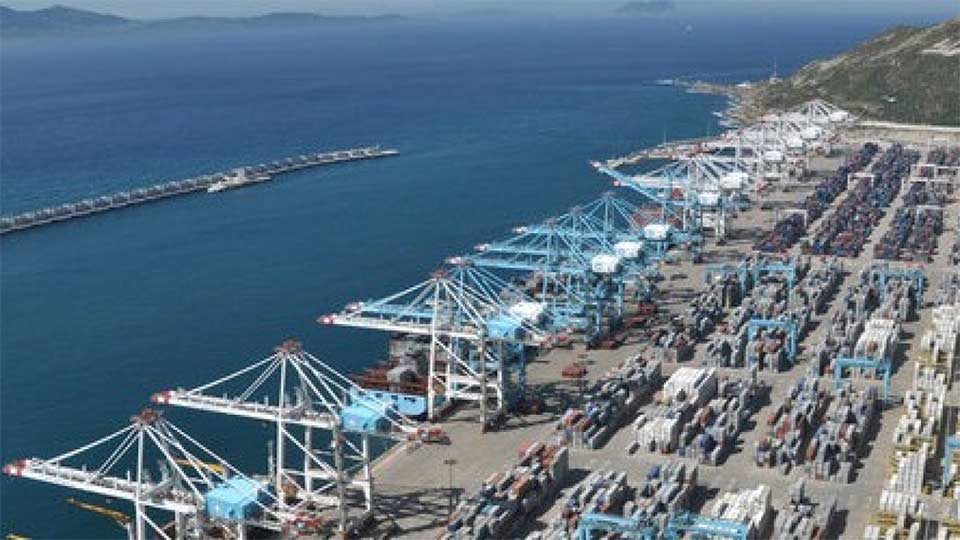Sea News Global Maritime News
by Baibhav Mishra
(Image Courtesy: Morocco World News)
Morocco is preparing to operate new quays at the port of Tangier, which will turn it into the biggest port in the Mediterranean in terms of container capacity and a magnet for investment and manufacturing industries.
With the expected development of logistics facilities and the rise in the number of off-shore companies in an adjacent free economic zone, it is believed that the Tanger Med 2 port will become the primary port destination in the Mediterranean. It would surpass the two largest commercial ports in the region — Algeciras and Valencia in Spain.
“The inauguration of the Mediterranean port of Tangier 2 will be indicative of the success of the handling and services policy that Morocco is trying to implement in a range of free zones,” Mohamed Yawhi, a professor of economics at Rabat University, said in a statement.
“The new port will be able to handle a larger number of containers coming from different ports of the world as well as facilitate the transit of passengers.”
Yawhi said Morocco is taking advantage of its strategic location and of Moroccan King Mohammed VI’s support for free-zone ports to aid economic and social development.
For the handling and services policy to succeed and for Morocco to transfer industry and technology, Yawhi said local companies need to strike partnerships with international firms in the neighbouring industrial zone in industrial, logistics and service activities.
The port of Tangier, near the Strait of Gibraltar, has undergone a major expansion in the past two years. Since being equipped with three of the largest container cranes in the world last February, the port has been working at full capacity.
The port’s website states that Tanger Med 2 represents the third stage of the development of the Tangier-Mediterranean port complex, along with Tanger Med 1, the passenger terminal and the small boat harbour. Port facilities are managed by APM Terminals, a joint venture between Danish Maersk, German Eurogate and a local company.
Reuters quoted Port Director Rachid al-Hawari as saying: “The port will add another 6 million containers to its annual capacity after the expansion that had cost 1.3 billion euros ($1.47 billion.)” Last year, the port, already Africa’s largest commercial port, handled a volume of 3.5 million TEUs (20-foot containers).
Morocco is hoping to increase Tangier 2’s container handling capacity to 4.5 million TEUs by the end of the year, matching the capacity of Port Algeciras in southern Spain.
Tanger Med 2 provides a platform for exports from local production plants of automotive parts for French automakers such as Renault and Peugeot. Port authorities hope to capitalise on the port’s location on the western side of the Mediterranean coast, to turn it into a hub for container traffic between Africa, Europe and Asia.
Hawari said he was optimistic the port’s capacity would be increased by 1 million containers a year but declined to provide more accurate forecasts for future volumes. He said the original port reached a capacity of 3.5 million containers in six years.
“About 90% of the container volumes passing through the port are transit containers going to other destinations,” Hawari said. He explained that West Africa is the largest market with a 40% share, an area where Moroccan companies have expanded extensively in recent years.
About 20% of the volume of containers goes to Europe and 10% to the Americas. Morocco invested about $1.13 billion in building and equipping the first quay, providing about 6,000 jobs at the port and another 70,000 in a commercial zone in the region.
The port is about 50km west of Tangier. The site allows room for further expansion. Tangier also has a ferry port that handles 40,000 passengers a day during the summer season.
The new port is expected to reduce waiting times and to ease the traffic pressure on central Tangier.
Deputy General Director of the Tangier Port Authority Hassan Abkari said the port of Tangier serves regular passenger and cargo sea lines with the ports of Algeciras and Motril in Spain, Sete in France and Genoa and Savona in Italy.
Said al-Hadi, head of the board of directors of Tanger Med, said: “There is a significant margin for growth for the ports of Tangier and of Algeciras. Over the next 10 years, both ports together will be able to handle 16 million containers a year.”
Experts said Tanger Med 2 has an excellent chance of becoming the number one port in the region, especially after being awarded an Eco-Friendly Port Certificate in March 2016 by the European Organisation of Ports, the first African port to receive the certificate.
The port is connected to more than 186 ports in more than 77 countries. It is near the Free Industrial Zone, where 900 companies operate in various industries, including the automotive sector, textiles, electronic devices, air navigation, logistics, food and other value-added businesses. The zone employs about 70,000 people and brings in $6.2 billion a year in revenues, port management data stated.
Since its creation in 2007, the Port of Tangier has made great strides. Data show that, by the end of 2017, it received more than 51.3 million tonnes of cargo and about 3.3 million containers.
Yawhi said it is necessary to expedite opening the port of Nador, west of the Mediterranean, to provide support and enhance integration with the ports of Tangier and the free zone in Kenitra.
(Source: Arab Weekly)
Sea News, July 9








